Concertinaed paper-like ribbons swoop through an exhibition about performance art and movement designed by London firm Amanda Levete Architects at the Hayward Gallery in London.
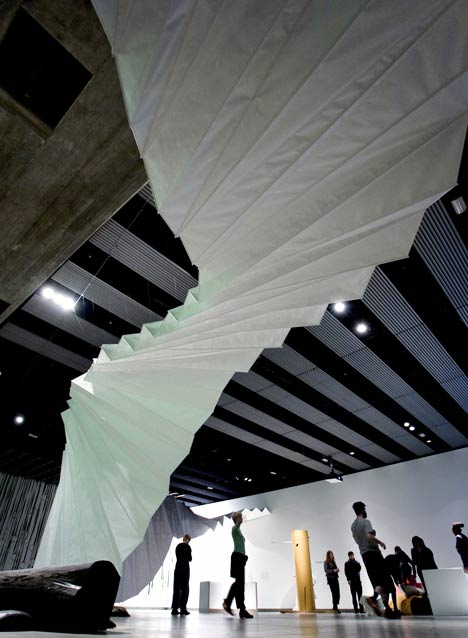
Called Move: Choreographing You, the exhibition charts the relationship between performance and visual art over the last 50 years and invites visitors to participate in the installations on show.
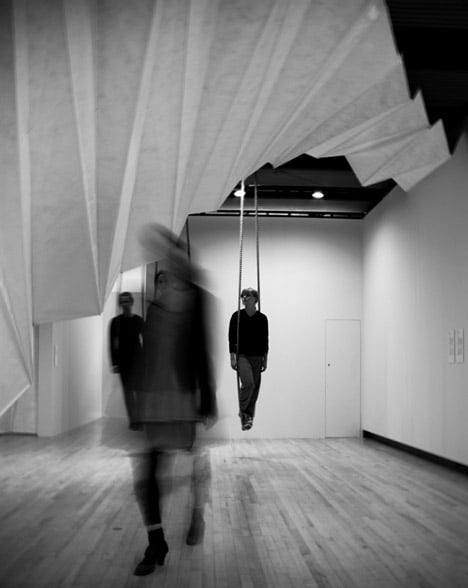
Above photograph is by Stephen Citrone
The translucent paper-like structures, made of Tyvek, create partitions and help to direct visitors around the exhibition.
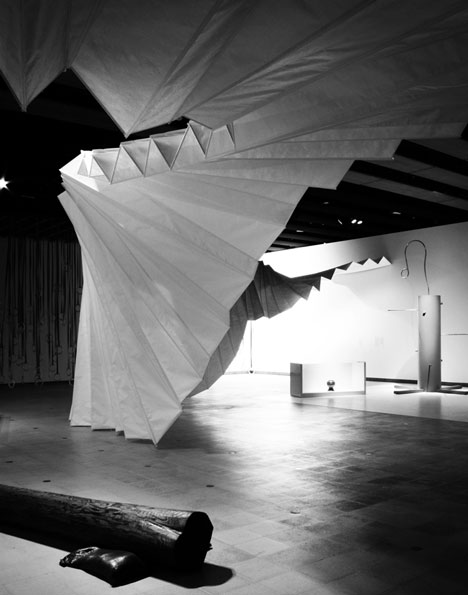
Above photograph is by Stephen Citrone
Taking inspiration from origami and kites, the structures were developed in collaboration with London studio Kite Related Design.
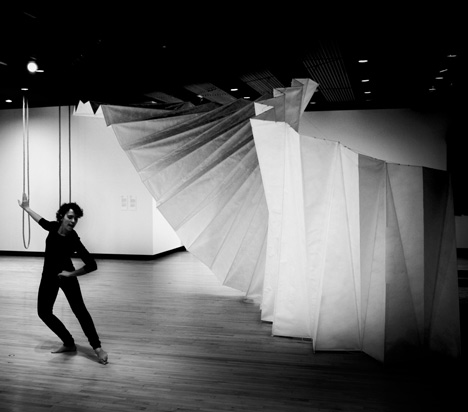
Above photograph is by Stephen Citrone
The exhibition continues until 9 January 2011.
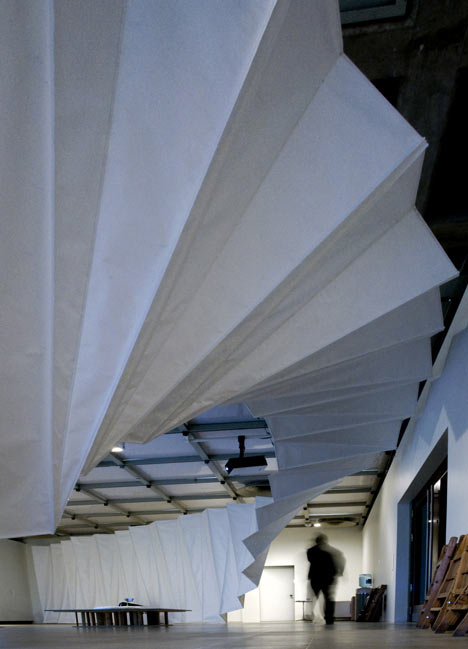
Photographs are by Gidon Fuehrer unless stated otherwise.
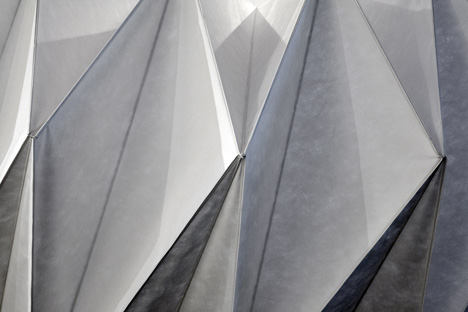
See all our stories about Amanda Levete Architects »
The following information is from the architects:
Move: Choreographing You
Move: Choreographing you is an exhibition of visual and performance art curated and hosted by the Hayward Gallery on London’s Southbank. The theme of the exhibition focuses on sculptures and installations which invite the visitor to become both participant and performer through interaction with performers, visitors, and the pieces themselves.
AL_A was commissioned by the Hayward Gallery to do the interior spatial design and planning of the exhibition, as well as develop a multi-media archive in collaboration with interactive designers Unit 9.

The exhibition design was driven by the relationships between choreography and geometry, movement and form. Inspired by the photographic motion studies of the human body of Etienne-Jules Marey and Eadweard Muybridge, we have created a collection of spatial dividers which are defined by a serial transformation of a single material: a sequence of folded oscillations of Dupont Tyvek.
The resulting translucent paper-like fabric ribbons, a counterpoint to the brutality of the building, rise and fall with undulating folds which simultaneously define themselves as way finding devices, partitions, suspended ceilings, and portals. These fluid spatial and formal transformations choreograph the movement of the visitor through areas of sculpture, film, archive and performance.
Click for larger image
The spatial configurations defined by our dividers are intended to embody two types of performative experience: public and private. In the public experience, the ribbons frame views, carve space, and lead visitors to a fluid and communal experience of the interactive objects and installations of Bruce Nauman, Robert Morris, Franz West, Franz E. Walther, William Forsythe, Christian Jankowski, and others.
In the private experience, the ribbons are used to enclose and define smaller more intimate spaces for introspective and singular experiences with the works of Isaac Julien, Dan Graham, Simone Forti, Tanya Bruguera, Lygia Clark and others.
While the expressive form of the ribbons was conceived as a choreography of material inspired by origami, the structure and bespoke detailing of the paper-like ribbons was inspired by those found in kites and was developed in close collaboration with fabricators Kite Related Design.
Click for larger image
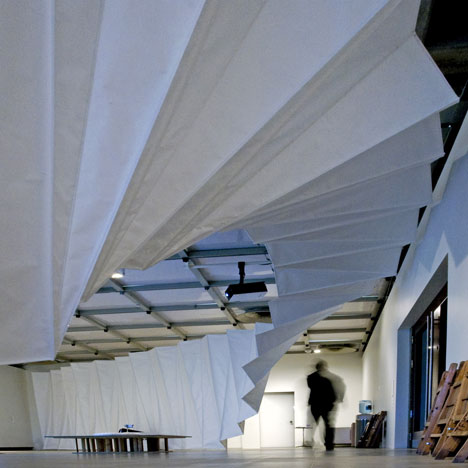

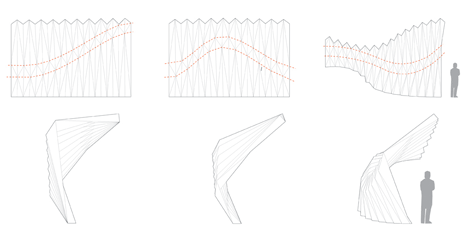




太有意思了。收藏了。